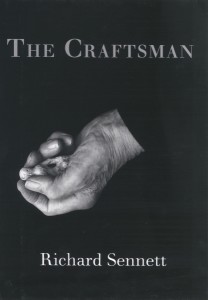
This summer, a dear friend who knows of my work with pipes, gave me an extraordinary book as her gift: “the Craftsman” by Richard Sennett, a sociology professor at the London School of Economics and New York University. The book has caused a stir among experts as it calls into play the value of the craftsman in an entirely industrialised society.
I certainly recommend it to all craftsmen and in particular to my pipe maker friends. The start of the chapter entitled “the troubled craftsman”, quoted below, gives us an idea of its contents.
“The word “Craftsman” summons an immediate image. If you peer through the window of a carpenter’s shop, you see an elderly man surrounded by his apprentices and his tools. Order reigns within: parts of chairs are grouped neatly together according to type, the fresh smell of wood shavings fills the room, the carpenter bends over his bench to make a fine incision for marquetry. However, the shop has been at risk since a furniture factory opened down the road. The craftsman may also be seen at a nearby laboratory. A young lab technician frowns at six dead rabbits, splayed on their backs on a table with their stomachs cut open. She is worried, as the injections that she practiced on them have gone wrong: she is trying to understand whether she did the procedure wrong or if there is something wrong with the procedure.

We can find a third craftsman in the town’s concert hall. The orchestra is doing concert rehearsals with a visiting conductor; he works obsessively with the string section, going over a passage numerous times to obtain perfect synchronisation between the string players. The musicians are tired but also exhilarated as their sound is becoming coherent. The manager is worried; if the conductor continues like this, the management will have to pay extra wages to the orchestra. The conductor is oblivious.
The carpenter, the lab technician and the conductor of the orchestra are all craftsman, in the sense that they dedicated to their work for their own sake. They carry out a practical activity, but their work is not simply a means to an end. The carpenter might sell more furniture f he worked faster; the technician might get by by passing the problem to her boss; the conductor of the orchestra would be invited more frequently to work with the orchestra if he kept an eye on the clock. It’s certainly possible to get by in life without dedication. The craftsman represents a specific human condition: that of being personally engaged in the things that they do”.




